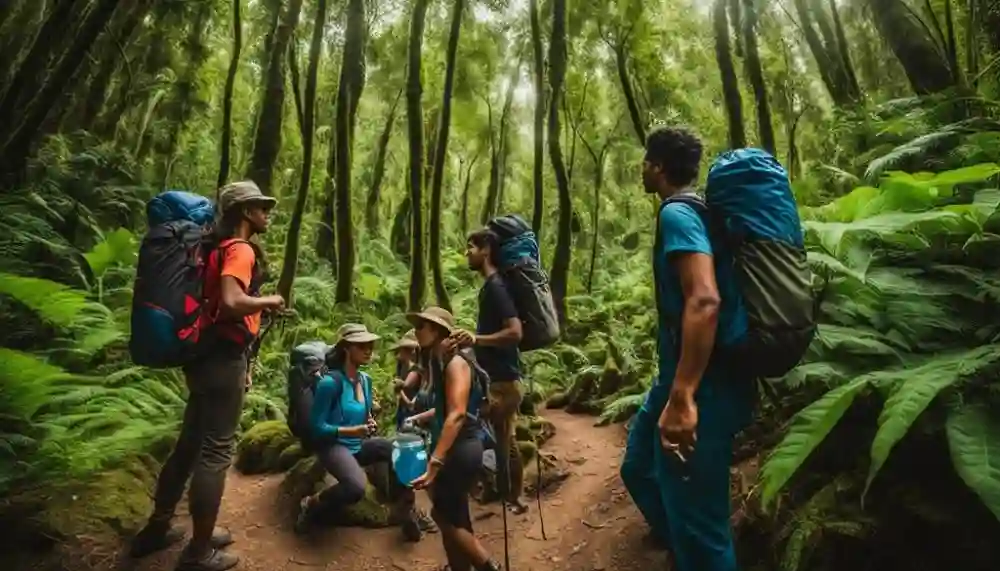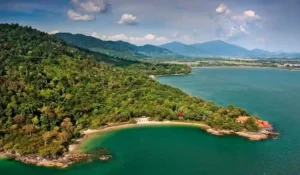Eco-Friendly Adventure Travel Tips for Thrill Seekers

So, you want to explore the wild, push your limits, and do it all while leaving Mother Earth in one piece? I get it. The rush of jumping into a new adventure, whether it’s hiking up a mountain or zip-lining through a rainforest, is unbeatable. But what if I told you that you can have the thrill and be eco-conscious about it? Yep, that’s right. Get ready to dive into these Eco-Friendly Adventure Travel Tips for Thrill Seekers that’ll keep you feeling good and the planet a little bit better off too.
Why Should You Care About Going Green on Your Next Adventure?
Okay, let’s start with a reality check: travel, especially adventure travel, can be tough on the environment. Think about it: those rugged trails you love to hike? They get eroded. Those pristine beaches you visit? They get littered. Those epic forests? They’re threatened by over-tourism. But hey, here’s the kicker—thrill-seeking doesn’t have to mean wrecking the place you’re adventuring in.
I had my “uh-oh” moment after climbing a mountain in Colorado (shout-out to Pike’s Peak) and realizing the trail had more trash than a convenience store parking lot. I got super bummed out, but then I thought, “What if I could do better? What if all of us could do better?”
Fast forward a few years, and I’m here to give you the lowdown on how to enjoy your adventure responsibly. You ready? Let’s dive in.
Choose Eco-Friendly Destinations
Look for Sustainable Hotspots
Okay, you’re heading out for a wild adventure. But where? The world is your oyster, but not all oysters are eco-friendly. So, how do you choose? I’ve learned the hard way—go for places with legit certifications. We’re talking about places that get an eco-checkmark from organizations like:
- Green Globe
- Rainforest Alliance
- EarthCheck
I remember booking a trip to a national park in Africa (no big deal, right?), and the tour guide was all about making sure we didn’t disturb the wildlife. It felt good to know that the park’s fees were directly funding conservation projects. Worth it? Heck yes. And here’s the real kicker: these places also offer some of the most jaw-dropping views.
Support Conservation Efforts
This one’s personal for me. I’ve visited places where the locals rely on tourism to fund their conservation projects—every ticket sold goes to preserving the land, protecting the wildlife, and ensuring the area remains beautiful for future travelers.
That’s why, y’all, when choosing your destination, make sure you’re supporting these types of places. It’s like putting your money where your adventure-loving heart is.
Gear Up the Green Way
Invest in Quality, Not Quantity
Here’s a secret: when it comes to gear, cheap is often just that—cheap. And it’s not just about the quality; it’s also about the environmental cost of manufacturing cheap stuff. Trust me, my first backpack was one of those “guy who got it for $10” situations. It lasted through one hike, then fell apart faster than my 2020 sourdough starter (RIP, Gary).
Go for durable gear made from eco-friendly materials like recycled fabrics, sustainably sourced wood, and biodegradable components. Not only will it last longer, but it’ll also leave you feeling better about your choices.
Rent When You Can
You ever been on a trip where you needed specific gear—like a kayak or climbing shoes—and thought, “Well, I guess I’ll buy them.” Been there. Done that. And, let me tell you, all that unused gear now takes up a shelf in my closet, collecting dust and mocking me.
Instead, rent! It’s a great way to reduce the carbon footprint. Local rental shops often maintain high-quality gear, and it’s cheaper than buying a new set that you’ll only use once. Plus, it’s a wicked way to support the local economy, something I totally recommend as part of Eco-Friendly Adventure Travel Tips for Thrill Seekers.
Travel Light and Green
Think About Your Carbon Footprint
When it comes to transportation, let’s just say I’ve made every mistake in the book. I remember flying halfway across the country for a weekend hike in a national park. My carbon footprint? So big it could’ve been its own continent.
These days, though, I keep it smarter. Here’s how to do it:
- Book direct flights (seriously, no layovers).
- Take buses, trains, or carpools instead of renting a car.
- Consider alternatives like biking to local spots instead of driving.
Oh, and if you’re feeling super fancy, you can offset your emissions by supporting carbon-reduction programs. I offset a trip once, and it felt like paying the karma tax for my earlier flying days.
Pack Like You Mean It
One thing I learned during my travels: the lighter you pack, the better. No, I’m not talking about sacrificing your favorite hoodie, but packing wisely. Here’s a short list:
- A solar-powered charger (no more waiting in line for an outlet at the airport)
- A reusable water bottle (I learned this after seeing 20,000 plastic bottles floating in a river)
- Compostable toiletries (never leave the jungle without them)
And when I tell you my first trip to the Amazon with a backpack full of disposable plastic snacks ended in guilt, trust me, it’s a lesson I’ll never forget.
Respect Local Cultures and Ecosystems
Leave No Trace (Seriously)
It’s tempting to “leave your mark” on the world, but there’s a better way. The Leave No Trace principles are the Bible of eco-friendly adventuring. You want to respect the environment, and, honestly, it’s one of the easiest things to do.
- Stick to marked trails
- Pack out your trash (yes, including that candy wrapper)
- Camp on durable surfaces
If you’re unsure whether something is eco-friendly, ask yourself: “Would this piss off a ranger?” If the answer is yes, don’t do it.
Go Beyond Sightseeing
I once spent a week volunteering at a wildlife sanctuary during a trip to Thailand, and let me tell you, it was worth it. These opportunities allow you to really get involved with local conservation efforts.
Look for experiences where you can contribute—whether it’s working with conservation teams, participating in wildlife monitoring, or simply helping maintain local trails.
Sustainable Adventures: The Good Stuff
Jungle Trekking
You know what’s better than a crazy adventure? A crazy adventure with purpose. Trekking through the Amazon or Costa Rica’s rainforests offers a heart-pounding experience and a chance to see incredible biodiversity. But the trick here is choosing eco-friendly tour guides who respect the land. Trust me, it makes all the difference.
Kayaking
If you haven’t kayaked in a protected marine reserve, you’re missing out. Whether it’s New Zealand’s crystalline waters or California’s kelp forests, paddling through these areas is like a front-row seat to nature’s greatest hits. Best part? You’re using minimal energy, which means minimal impact.
Paragliding
Now, this one’s for the daredevils. Paragliding over a protected valley or coastlines offers views that will make you feel like a bird (minus the whole having-to-flap-your-wings part). But here’s the thing: use operators that follow strict eco-tourism guidelines. It’s thrilling, it’s sustainable, and it’s epic.
In Closing: Adventure Responsibly
Here’s what it all comes down to: you can absolutely have your thrill ride and still keep the planet in one piece. Whether it’s booking eco-friendly accommodations, respecting local wildlife, or just being smarter about your gear, every little bit helps.
Remember, Eco-Friendly Adventure Travel Tips for Thrill Seekers aren’t about being perfect—they’re about being mindful. So, next time you head out on your wild adventure, take a breath, think about the impact, and go for it. Your adrenaline rush will be even sweeter knowing you did it the green way.
Oh, and if you ever need advice on which biodegradable sunscreen won’t make you smell like a walking flower shop, hit me up. I’ve got that covered too.







